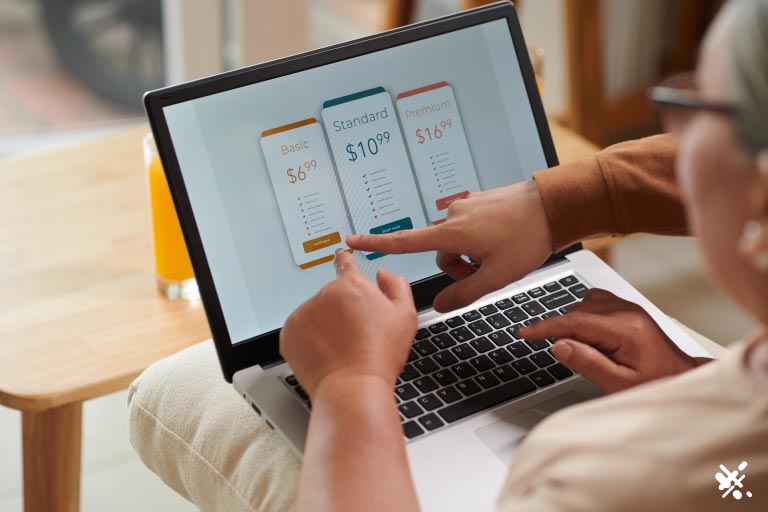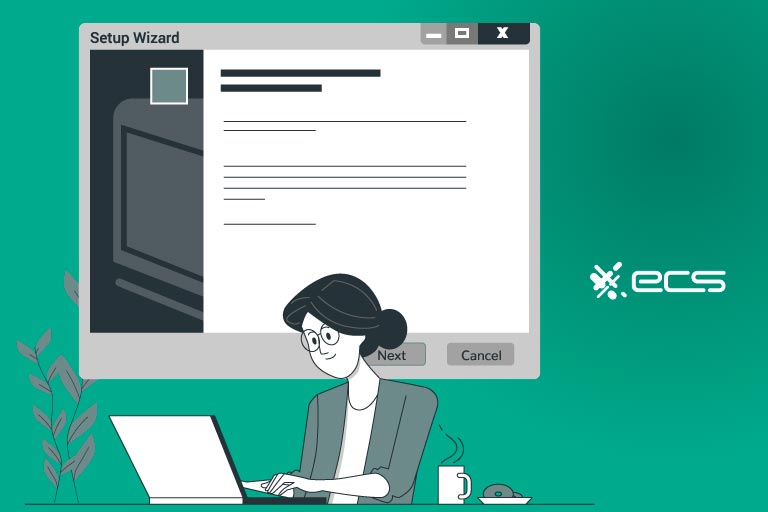One of the critical aspects of running a successful Software-as-a-Service (SaaS) business is the billing processes and pricing model. Because these are recurring subscriptions, they demand a unique billing approach to ensure customers can be billed uninterrupted for as long as possible without intervention from the customer.
It also means that the pricing structure and options available to the customer must perfectly fit their needs and expectations to maintain recurring revenues.
In the article below, we’ll review billing best practices and pricing strategies to help SaaS businesses succeed in this competitive environment.
SaaS Market Explosion
With 30,000 global SaaS companies, it is evident, the market for SaaS products is experiencing explosive growth and still has room to grow in the coming years. Some analysts believed the market would start to taper off. However, new players are still entering the field with innovative services that customers demand.
However, this growth and expansion also mean far more competition than a year ago. With all this competition, companies need to refine their business model to adapt to the changes brought on by new competators looking to disrupt the industry.
SaaS Billing vs. Widget Billing
It’s essential to understand how SaaS businesses differ from traditional businesses or online payments, at least from a billing perspective.
SaaS businesses rely on a recurring-billing business model. This type of business model isn’t entirely new. Many traditional businesses have used this model successfully for quite some time. Gyms or fitness centers and other services providing access for an ongoing monthly fee use this model.
But applying that business payment SaaS model to digital products or software is somewhat new from a mainstream perspective. These services often have variable billing rates, changing monthly based on usage, making SaaS billing different.
Unlike traditional billing for one-time products like software, a recurring billing model has its own unique requirements.
In the payment industry, this type of billing is ARB or automatic recurring billing. ARB aims to provide uninterrupted billing as long as the customer consents. You also want as little intervention as possible required on the customer’s end to continue the billing.
For this reason, many payment processors and gateways have implemented tools to help businesses achieve this goal. Businesses must understand and use these tools to the fullest, especially in today’s competitive environment.
Acquiring new customers in the SaaS space is becoming more costly. This means that losing a customer through a billing issue is also more expensive if that customer decides not to return or returns months later.
In the next section, we’ll review some of these SaaS billing tools that businesses need to be aware of.

Payment Tools For SaaS Businesses
The churn rate is one of the most significant drags on a subscription-based business model like a SaaS business. This is a measure or metric of how long a customer stays a customer and how many customers leave the service.
A high churn rate can make a SaaS business unstainable as the cost to acquire is too high if members only stay for a short period of time. The backbone of a subscription model is that the revenue and member count grow consistently over time.
One way that churn rates can increase is through improper billing practices or configurations that cause failed payments.
A perfect example of involuntary churn occurs when a billing fails due to outdated credit card information, and the customer must intervene.
Almost any B2B SaaS billing solution can use automatic card updating to solve outdated card information issues.
Automatic Card Updating
Most trusted payment processors like ECS Payments offer access to several top-tier payment gateways. These gateways provide automatic card updating, which is critical for any SaaS payment system, and it’s an option that merchants should always use when accepting payments via credit cards.
Automatic card updating by the payment gateway polls the customer’s issuing bank to determine if their billing information has changed for their chosen payment methods. If it has, it automatically updates the customer information on file so you can charge them for their upcoming billing cycle.
Without this, the transaction will fail, and you may lose that revenue if the customer decides not to fix the problem.
With automatic card updating, SaaS recurring billing continues uninterrupted, and the customer never has to intervene or even be notified.
Invoicing Best Practices
Some larger clients may require you to send invoicing for their SaaS subscriptions to their accounts payable department. For these larger customers, it’s essential to have automated invoicing tools to help them pay on time and without any unnecessary friction.
Most gateways will have SaaS invoicing software tools to automate your invoicing. You can implement them in various ways, either directly with the payment gateway admin panel or by integrating your current billing or account software with the payment gateway.
You can do this via an API, and many popular accounting software programs will integrate with the top payment gateways. This way, you can send invoices directly from your accounting software and more easily be paid on time.
If you need help integrating a payment gateway into your SaaS billing management software, contact ECS Payments. We have in-house technical support staff to help our merchant partners fully utilize all the available tools.

Customer Information Storage
Another synergistic aspect of SaaS subscription billing solutions that helps streamline payment workflow is customer information storage.
When a business stores this information locally or on its servers, it creates a lot of security headaches. The storage of customer payment information is bound by PCI DSS guidelines, a set of best practices that merchants must follow.
Many payment gateways will allow businesses to instead store sensitive customer and credit card information on the gateway’s servers, which are secure and can be used for recurring billing.
This alleviates many of the leading security concerns and helps with invoicing or billing SaaS customers since all the information is securely stored and easily accessed by any billing SaaS software.
By securely holding the customer’s billing information, customers can easily pay invoices with one click since their information is already stored and tokenized.
This is another way that using these tools helps streamline the SaaS billing process and make it easier for customers to continue their payments without being hassled or having to do unnecessary work.
Using Subscription Management Software
Another option for SaaS companies is a third-party subscription business management application. These are also SaaS companies that sell their services to fellow SaaS businesses.
Of course, this means monthly fees are associated with these billing systems for SaaS customers. These can start around $600 per month and go up from there, depending on your monthly or annual subscription revenue.
These applications integrate with your SaaS billing platform or SaaS billing software. You will still need a merchant account and payment gateway with these services. But most of these applications are compatible with popular gateways commonly used for SaaS subscription billing.
These services can make life easier for some SaaS businesses. However, it may be difficult to leave these services when you want. Many aspects of your customer list are tied into these programs, making setting up your system rather tricky as you transfer customer data between two systems.
If you integrate one of these third-party subscription managers into your SaaS billing system, ensure you are comfortable with all the terms and possible pricing as your business grows.
SaaS Pricing Strategies and Best Practices
We covered some of the technical aspects of SaaS billing and how businesses should take advantage of all the tools available to them.
Next, we want to cover pricing strategies as they relate to SaaS billing best practices and how they can play a critical role in a SaaS company’s success. This is especially true for new businesses or those seeking market share.
In recent years, the trend for SaaS companies has been to use more transparent subscription plans, usually broken down into three or four tiers. The fourth tier is often reserved for enterprise customers. It is based on custom quotes. However, some companies use their third tier for this option.
Either way, the purpose is to make the different pricing plans as clearly defined as possible. This clear differentiation tends to increase the initial signups and conversions from trials into paid accounts.
Overly complex billing practices tend to cause hesitation when a customer is deciding on whether or not to move forward after a free trial.

Decide on A Flat-Rate or Usage-Based Pricing
One thing that SaaS businesses often grapple with is the decision to charge a flat-rate based on tiers or something that is more usage-based for recurring payments.
Usage-Based
An example of a usage-based pricing model would be a service that charges a per-user rate. For example, the popular project management app Basecamp is a SaaS company that uses a usage-based pricing structure.
Customers can add users as often as they like or remove users, and the billing adjusts automatically based on usage.
Flat-rate Tiers
Other SaaS businesses, such as Slack, use fixed tiers, and customers have a limit on the number of users for that tier. If the business needs to expand, someone must manually upgrade to the next tier level to accommodate this growth.
Both options can be profitable, but finding what works for your SaaS product and customers is critical. Doing this allows you to maximize your revenue per customer.
What Value Does Your Product Offer?
Much of this will come down to what your product offers regarding value for the customer. For example, if your product provides a particular value for each user, consider charging based on usage or per user.
However, suppose your product helps a company by doing one specific thing, but most employees or users don’t interact with it. In that case, you may consider flat-rate pricing.
If you choose to use a usage-based pricing model, it’s essential to provide value for each user you are charging for. The customer must feel that it’s a good value proposition to pay a fee for each employee who uses the software.
Of course, these are just guidelines; you can experiment with different models until you find the right one. However, changing the pricing model when you already have an established customer base can often be seen as unfair or predatory, especially if the average existing customer ends up paying more with the new payment terms.
In those cases, you may consider a modest price increase to your existing price model.
No customer likes to see a price increase. Still, they generally tolerate a slight increase more than an entirely new pricing model they then have to adjust to or understand.

Freemium SaaS Billing and Pricing
Another option for many newer SaaS companies is the freemium model. Freemium has existed in the software world for some time, but applying it to SaaS is relatively new. It can help new businesses to get a foothold in a competitive market.
With freemium SaaS pricing, you offer a part of your product for free for an unlimited time. This lack of time limits makes the freemium model different from a free trial or similar sales tool.
Freemium Benefits
The main benefit of a freemium pricing model is that you can get a lot of exposure to potential customers relatively quickly. Since there is no risk, many customers will try your service, assuming it can provide something useful.
Another benefit is that those customers may become dependent on your product as they use it increasingly, and it becomes a part of their workflow. Eventually, they may unlock additional features for a fee.
Depending on your specific product or service, these additional features can be priced with tiers or per feature.
Freemium pricing also works well for gaining a mailing list of potential customers. Customers who sign up can receive sales emails and other promotional materials to remind them of the available service and upgraded features.
The downside of freemium is that you risk devaluing your product. When you offer something for free, customers may see it as having little value, even if they use it regularly.
To combat this, SaaS companies must offer real value for the extra paid services above the freemium tier. This can be a difficult balance as you don’t want to provide too much for free, but you also don’t want all the much-needed features to be behind a paywall as that turns off customers.
Finally, nothing is truly free. So even though you offer a free tier, it likely costs resources to make that tier available. Whether servers or other infrastructure, you can quickly lose money if you aren’t getting enough paid customers.
Freemium can be a successful pricing model for SaaS companies, but it requires a very delicate balance between paid and free features that both feel fair and entices customers to pay after experiencing the free product.
Matching Your Billing Process With Your Pricing Model
The pricing model you choose will determine what features you may need in your SaaS billing solution.
For example, a per-user pricing model for a SaaS business will require integration between the subscription management software and the payment solution.
Because this type of pricing model sets up dynamic billing amounts that can change from month to month, the subscription management software has to be able to communicate this with the billing software or payment gateway handling the transaction.
In almost all cases, this will be done via the payment gateway API connected to the subscription management software the SaaS business is using.
When using or considering this pricing model, make sure your billing solution uses an API compatible with your subscription management software and has the features necessary to achieve this.
In some cases, SaaS companies may want to develop their own subscription management software and API integration. In this case, they will need an API that allows for developer access and testing.
Not all APIs and gateways allow developer tools and sandbox testing environments to create custom integrations. So always consider this possibility before choosing a payment gateway and API for your SaaS billing.

Use Metrics And Analytics
Metrics and analytics can be your window to see why your SaaS business is not performing how you want it to. It can also reveal if your billing processes or pricing model are to blame.
Generally, if a SaaS business is underperforming, it’s for one of the following reasons
- Too much churn
- Billing issues
- Incorrect pricing strategy
- Incorrect acquisition strategy or budgeting
- Low conversions from free trials
Your SaaS payment solution should help you to keep track of these metrics and spot where any issues are. You can use the built-in features within your payment gateway to either view these analytics directly or import them into the program of your choice.
Overall, SaaS businesses need to keep a close eye on their analytics and revenue recognition trends. Trends can quickly become a problem because of the recurring billing business model and the high cost of acquiring new customers. This sets up a situation where if a business waits too long to reverse a negative trend, it may be too costly to regain those lost customers.
If you are running a SaaS business, take advantage of all the metrics and analytical tools your payment solution offers to ensure your cash flow remains healthy and growing.
If Analytics Don’t Have The Answer, Just Ask Your Customer
This may sound strange as “data-driven” marketing has taken over recently. But sometimes, simply asking your customers why they are canceling or not converting is the easiest path to drastically improve your business model without taking guesses.
We previously spoke about the importance of analytics. Still, sometimes you can simply ask customers what they feel needs to be fixed with your billing issue.
When customers cancel or end a SaaS subscription, use an automated system to ask why they are leaving. Ensure the questioning is friendly to elicit the most honest answers.
One area to ask about is the pricing model and the value the customer feels they received. Ask them if one of the reasons for canceling was either a pricing model that was too complex or one that didn’t offer them the right fit for their needs.
This may tell you your pricing model has spread too far apart, and many people find themselves caught in the middle of two different tiers, which causes them to overpay.
This can sometimes be an intentional strategy. Still, it is often seen as predatory by consumers and generally backfires over time.
Ensure your pricing model isn’t leaving a core part of your potential customers in a no man’s land where one tier doesn’t entirely fill their requirements. Still, the next tier has too many services they don’t need.
Find that sweet spot where your core customers exist and set a tier for your service right in that sweet spot.
Get The Most From Your SaaS Billing Solution
Payment and billing processing is critical to the success of any SaaS business.
ECS Payments is a leader in offering the latest payment solutions tailored to recurring billing and SaaS business models.
Contact ECS Payments today to learn more about billing solutions that help your SaaS business succeed in a competitive landscape.
